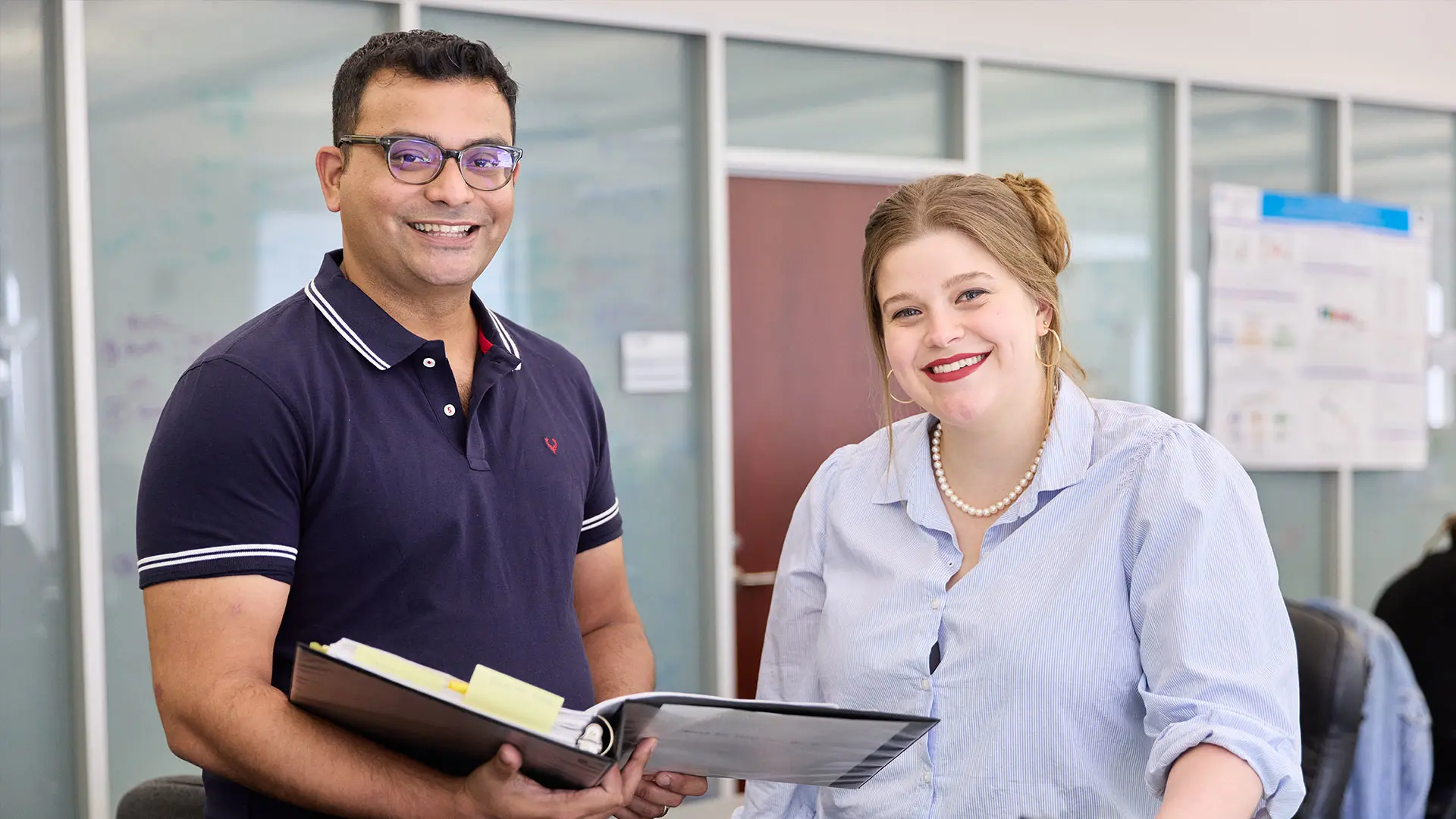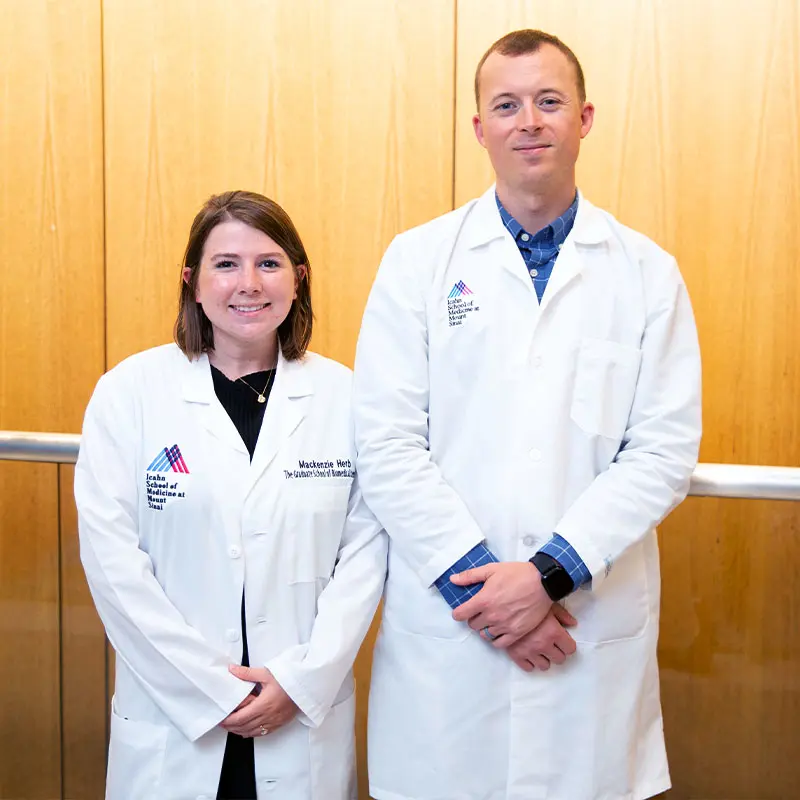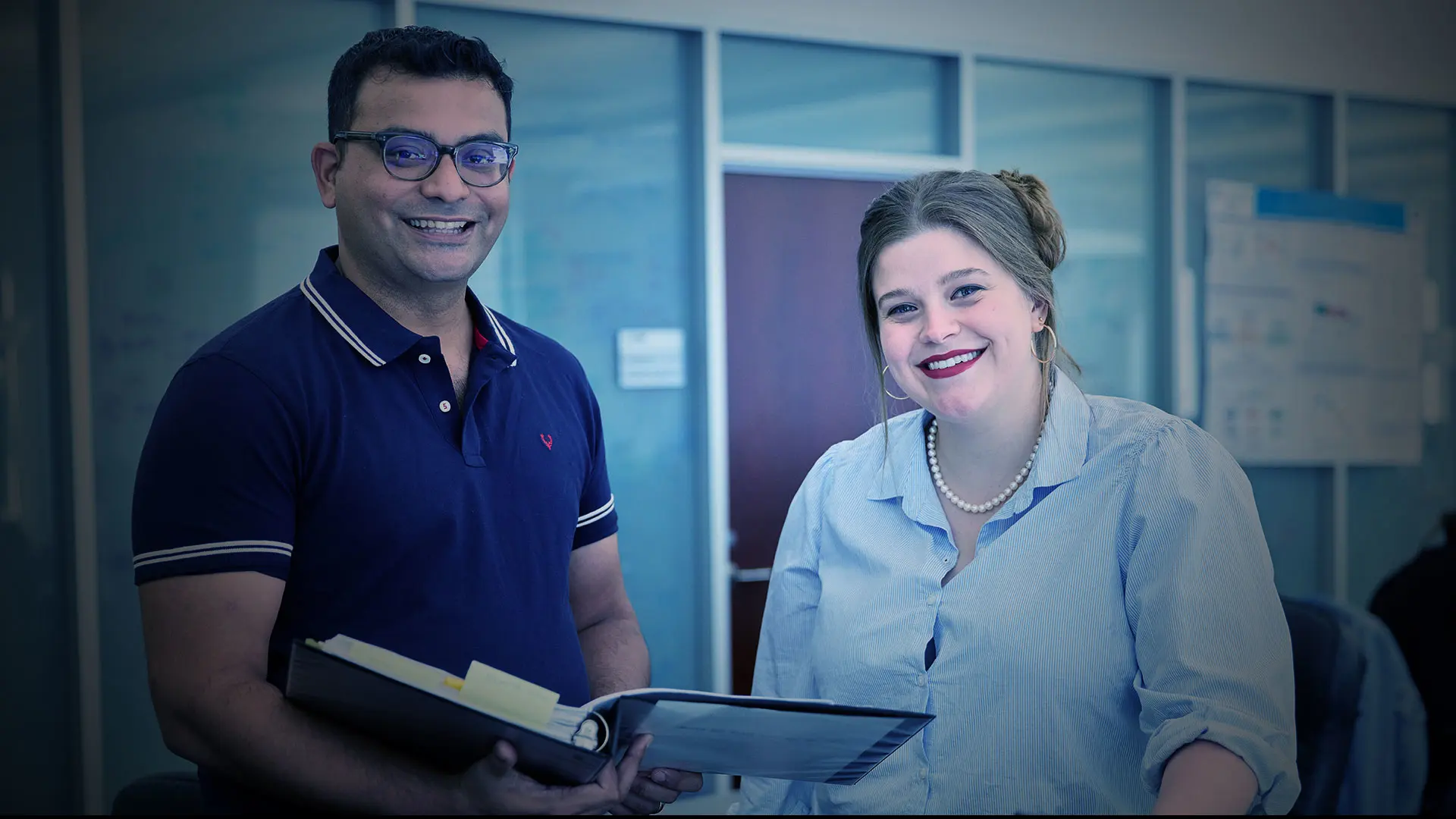
Olivia Cullen, MS, a first-year MD/PhD student at the Icahn School of Medicine at Mount Sinai, continues to work with Girish N. Nadkarni, MD, MPH, and has a goal to join the AIET multidisciplinary training area when she transitions to the graduate phase of her training.
When Olivia Cullen graduated from college, she had two career goals: to become a physician and to perform impactful clinical research. She made a decision to pursue a Master of Science in Clinical Research (MSCR) degree at the Graduate School of Biomedical Sciences at the Icahn School of Medicine at Mount Sinai.
“For me, the MSCR program was an opportunity to understand the inner workings of clinical research to discover what interested me most,” Ms. Cullen says. “Ultimately, I fell in love with data science research, and now I’m enrolled in the MD/PhD program at Mount Sinai and plan to join the AIET multidisciplinary training area when I transition to the graduate phase of my training.” The Graduate School launched this new concentration in fall 2022.
Under the mentorship of renowned physician-scientist Girish N. Nadkarni, MD, MPH, and working with Akhil Vaid, MD, who is a postdoctoral scholar in his lab, Ms. Cullen classified data collected from electrocardiograms in the Augmented Intelligence in Medicine and Science Laboratory, which is part of the Charles Bronfman Institute for Personalized Medicine. Among her accomplishments was the creation of an algorithm to help identify patients with a rare heart condition known as hereditary transthyretin amyloidosis (haTTR). Dr. Nadkarni is Director of the Charles Bronfman Institute for Personalized Medicine. He is also the Irene and Dr. Arthur M. Fishberg Professor of Medicine and Mount Sinai Health System Chief of its newly established Division of Data Driven and Digital Medicine (D3M).
“Mount Sinai is an excellent place to do computational research. Not only do they have vast amounts of data to work with from all of their locations around New York City, but also they have exceptional mentorship,” says Ms. Cullen. “My ultimate goal as a researcher is to use the vast amount of health care data we have been accumulating to better the lives of patients. Specifically, I am fascinated by the applications of computer vision in the field of health care, and I want to improve analysis of medical imaging.”
“Mount Sinai is an excellent place to do computational research. Not only do they have vast amounts of data to work with from all of their locations around New York City, but also they have exceptional mentorship.”
– Olivia Cullen, MS
The AIET concentration offers students with solid quantitative and technical backgrounds educational and research opportunities in AI/machine learning, next-generation medical technologies (medical devices, sensors, robotics, etc.), and virtual/augmented reality simulation technologies for clinical applications or drug discovery. AIET further leverages existing relationships with several acclaimed higher education institutions, for example, the State University of New York at Stony Brook, Rensselaer Polytechnic Institute (RPI), the Grove School of Engineering at the City College of New York, The Cooper Union – Albert Nerken School of Engineering, and the Hasso Plattner Institute of the University of Potsdam, in Germany, to offer complementary technical expertise to expand collaborative research and enrichment opportunities for trainees and faculty.
AIET is led by co-directors Hayit Greenspan, PhD, and Alan C. Seifert, PhD. Dr. Greenspan is the Director of Artificial Intelligence in Imaging at Mount Sinai’s BioMedical Engineering and Imaging Institute (BMEII). She also holds academic appointments as Professor of Diagnostic, Molecular, and Interventional Radiology at Icahn Mount Sinai and Professor of Biomedical Engineering at Tel Aviv University. Dr. Seifert, a biomedical engineer with a background in both imaging physics and the medical sciences, is Assistant Professor of Diagnostic, Molecular, and Interventional Radiology.
As a student at Mount Sinai’s Master of Science in Biomedical Science program, Ms. Langan says she had an extraordinary opportunity to join the ultra-high field MRI neuroimaging team led by trailblazing scientist Priti Balchandani, PhD, and use 7-Tesla MRI to image the brain at greater resolution. Ultra-high field MRI—coupled with novel processing pipelines developed in the Balchandani lab—allows Mount Sinai scientists to gain a deeper understanding of neurological diseases in ways never seen before, providing new insights into epilepsy, major depressive disorder, and COVID-19.
“I have had the opportunity to explore MRI research and look at the brain in different ways,” Ms. Langan says. “Here, we use an ultra-high field MRI magnet and advanced contrast and resolution to look at detectable differences that you wouldn’t see at lower MRI magnet strengths—the kind used in a clinical setting. Being able to ask questions about the brain, and image it in really advanced ways, is what’s so alluring about MRI and all the incredible things that you can discover,” says Ms. Langan.
By the time Ms. Langan graduated in June 2022, she could claim a list of remarkable achievements. In April 2022, she was first author of research published in Frontiers in Neurology and is a middle author of a paper accepted to Brain and Behavior. Two abstracts presented at the May 2022 International Society in Magnetic Resonance in Medicine annual meeting in London will likely yield new first-author manuscripts. She also received an award for best poster in the neuroimaging category at the 10th Annual BMEII Symposium.

Alan C. Seifert, PhD, Co-Director of the Artificial Intelligence and Emerging Technologies in Medicine multidisciplinary training area, with Mackenzie Langan, MS, a PhD student
Ms. Langan has since transitioned into the AIET program where, she says, “I have been able to bolster my programming skills and develop new ways to work through complex problems. With excellent mentors such as Dr. Balchandani and Dr. Seifert, I have the support to pursue projects I am passionate about. With additional access to our collaborating Mount Sinai physicians, I know I can be on the forefront of groundbreaking imaging research that will deepen our understanding of the underlying pathophysiology of a multitude of neurological disorders. While I am still figuring out how I eventually will use my PhD, I know that at Mount Sinai, I have the space to thrive, and with the support of the AIET program, the sky is the limit.”
